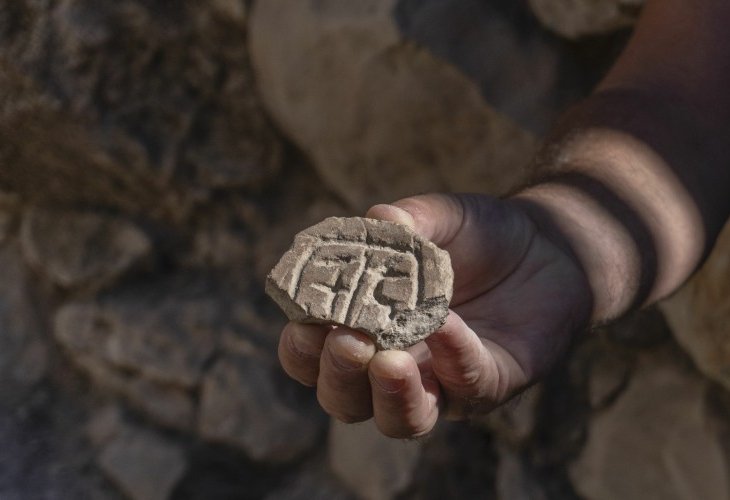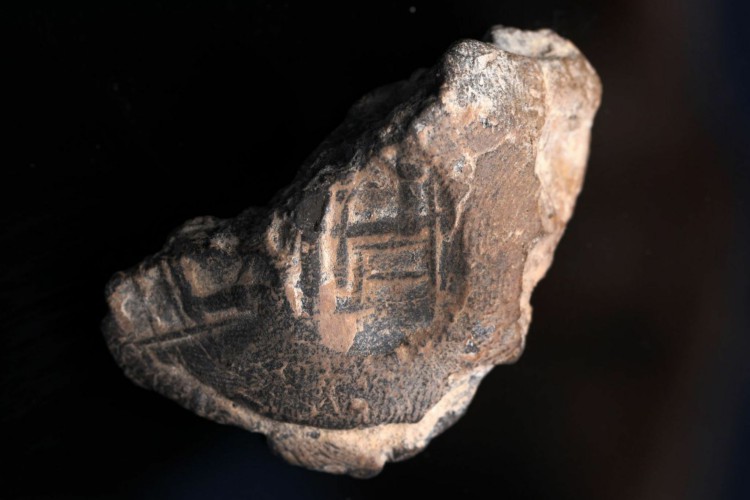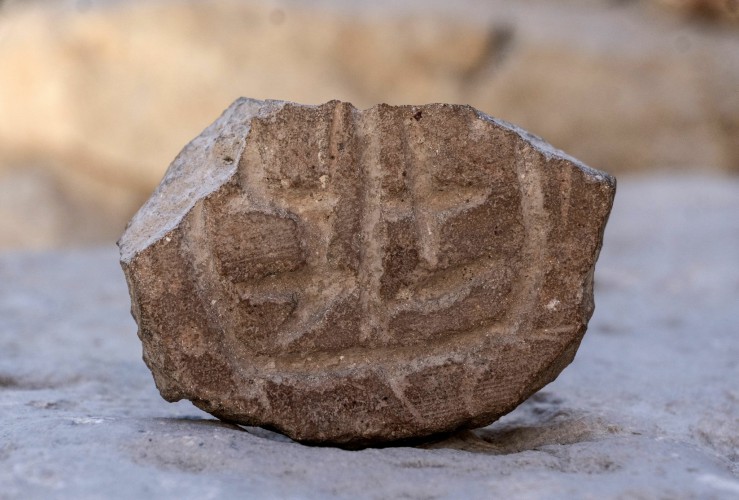Ancient Discovery: Persian Era Seal Found in the City of David
Recent finds from the Givati Parking Lot dig in the City of David, dating to the Return to Zion period, suggest efforts to restore administrative systems despite Jerusalem's struggles post-First Temple destruction.
 Seal made from a large clay shard from the Persian period (Photo: Shai Halevi, Israel Antiquities Authority)
Seal made from a large clay shard from the Persian period (Photo: Shai Halevi, Israel Antiquities Authority)How did Jerusalem cope with the massive destruction brought upon it by the Babylonian army in the 6th century BCE? A double seal impression on a bulla and clay seal, likely dating to the Persian period, might provide insights into this historical question.
These rare findings were discovered during archaeological excavations conducted by the Israel Antiquities Authority and Tel Aviv University at the Givati Parking Lot in the City of David, located within the Jerusalem Walls National Park. They were found in a cleared and arranged area within the ruins of a large building that was destroyed in the Babylonian destruction of Jerusalem.
Professor Yuval Gadot of the Department of Archaeology and Ancient Near Eastern Cultures at Tel Aviv University and Dr. Yiftach Shalev of the Israel Antiquities Authority note that, "Despite the extensive excavations conducted in Jerusalem to date, finds from the Persian period have been scarce, resulting in a lack of information about the city's character and appearance during this era. Discovering these artifacts in an archaeologically datable context is extremely rare."
The seals—known as bullae—were small pieces of clay used in ancient times to seal documents or containers (such as jars used to store agricultural produce collected as taxes), intended to keep them closed en route to their destination. The objects themselves often didn't survive intact (especially letters), but the clay bullae, made from a ceramic-like material, endured, providing evidence of administrative systems and even the individuals behind them..
 Seal impression (Photo: Eliyahu Yanai, City of David)
Seal impression (Photo: Eliyahu Yanai, City of David)According to Prof. Gadot and Dr. Shalev, "The discovery of the bulla and seal in the City of David suggests that despite the city's dire state post-destruction, efforts were made to restore administrative systems, and its residents continued to use the buildings within the city's ruins."
The double seal impression was found on a large piece of clay. The size of the clay piece—approximately 4.5 cm—indicates it was used to seal a large container, possibly a jar, rather than being meant for a letter. The impression features an image of a person sitting on a large chair with one or two columns in front of them. The image's design suggests it was made using a Babylonian-type seal.
Dr. Ido Koch, also from Tel Aviv University's Department of Archaeology and Ancient Near Eastern Cultures, notes that only about ten items in this style have been discovered in places like Ein Gedi and Jerusalem, appearing to have been used during the Persian period. Another bulla of this style, also from a Persian period context, was unearthed in excavations directed by Dr. Eilat Mazar on the eastern side of the City of David hill.
 Persian period seal (Photo: Shai Halevi, Israel Antiquities Authority)
Persian period seal (Photo: Shai Halevi, Israel Antiquities Authority)The seal is made from a large pottery shard of local production, featuring a circular frame divided into two sections on its exterior, each containing several linear engravings. These engravings might represent two figures or could be a pseudo-epigraphic seal (bearing designs meant to resemble letters). The seal's back shows a break where a handle might have once been attached. Its diameter of approximately 8 cm suggests it was used to seal large objects.
Alongside these items, other findings were uncovered, including, for example, a shard of a vase adorned with a face.
Researchers indicate that the discovery of these items on the western slope of the City of David hill adds significant information about the city's structure during the Return to Zion period, a time previously known mainly from the books of Ezra and Nehemiah: "The scarcity of finds from this period made it difficult to understand the city's status and extent. Discoveries from the excavation beneath the Givati Parking Lot shed light on the revival of the local administration, in a location similar to where it existed before the First Temple's destruction a century earlier."

